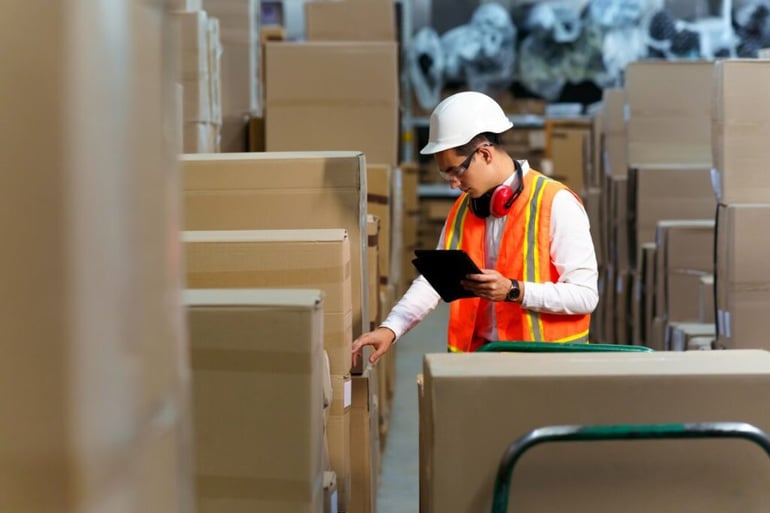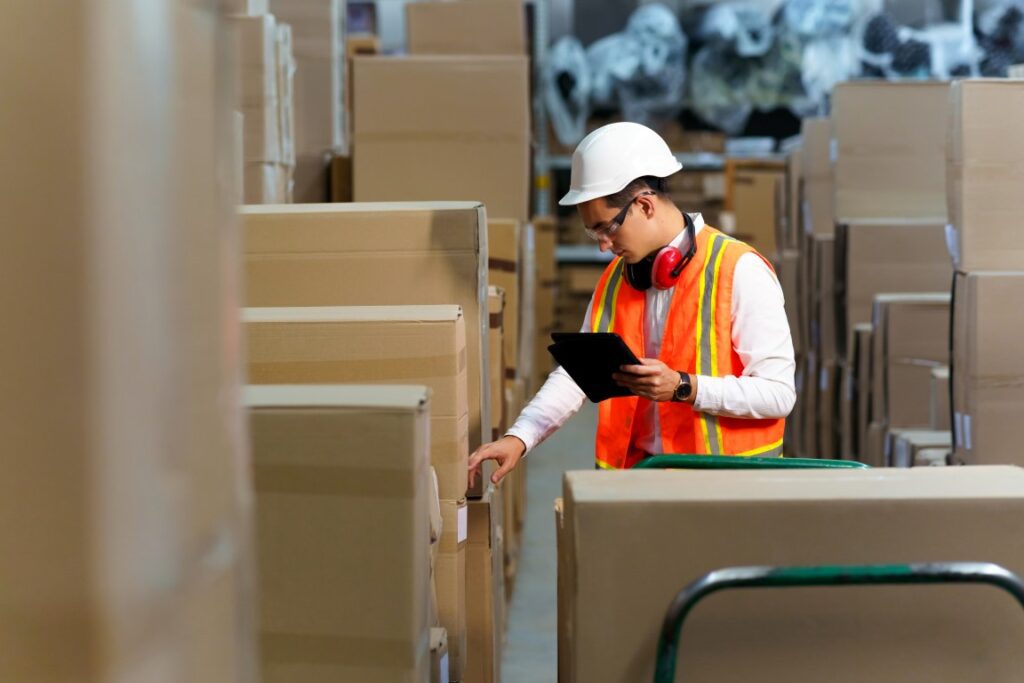The main goal of a logistics software is to deliver the best route combinations as quickly as possible, and within a pool of millions of available options. It’s no wonder the human brain can’t stand a chance when it comes to AI-based route optimization algorithms.
Optimized routing systems use complex algorithms to calculate the most efficient route. But the principle of intelligent routing is quite simple:
Combine what you know (customers, what products they want and within specific delivery deadlines), with what is knowable (things like average road speeds at different times of day, location or other barriers requiring a different route). Then, calculate the most efficient way to deliver the products, while still meeting customer expectations.
 Source: Envato
Source: Envato
Now let's look at when we need a logistics software for routes and what benefits to expect when using a route optimization software.
When do you need a logistics software?
If your company's transportation team still relies on basic tools to plan delivery routes, it’s likely that their operations are less efficient than they could be. Here are 6 signs that route planning may be a problem in your logistics operation.
Transportation costs increase faster than revenue
Business growth often triggers requests for new vehicles or more people in a manual route planning environment. This generally results in inflated fleet costs, while business growth remains at a standstill.
Since every business is different, there’s no precise and quick guide on how many drivers, trucks, or planners you need to meet delivery commitments. However, companies now-a-days can quickly retrieve important key performance indicators by monitoring transportation costs over time, and measuring how they’re changing with the help of logistics and distribution software.
You can’t safely meet delivery promises
Logistics route planners simply can’t take into account all the variables that can affect delivery times without advanced routing software. ETAs are inaccurate and, as a result, customers become frustrated.
You can’t get crucial information on delivery operations, efficiency, and performance
Without software, it’s difficult to get an accurate picture of how efficiently your delivery operation is running. This can lead to missed opportunities for improvement and cost savings.
Your business is experiencing rapid growth
Rapid business growth can quickly outstrip the ability of manual route planners to keep up. As a result, delivery promises may not be met, and customer satisfaction suffers.
You’re losing customers
If you’re losing customers, it may be due to missed delivery promises or inefficient routes. In either case, implementing logistics software can help you win back customers and retain them.
Your delivery team is overwhelmed
If your delivery team is overwhelmed, it may be a sign that your business has outgrown its current route planning methods. Implementing logistics software can help ease the burden on your delivery team and improve efficiency.
What benefits can you expect from a logistics and transportation software?
There’re many benefits to optimizing delivery routes, including reduced costs, improved customer service, and lower carbon emissions. Let's examine each of these benefits.
 Source: Envato
Source: Envato
Better use of trucks and drivers
This is one of the greatest advantages of logistics and transportation software. Route optimization software like Drivin's automatically assigns deliveries to the most suitable trucks and drivers, with the necessary skills and available hours of service, according to HoS restrictions. This ensures that every vehicle is being utilized to the best of its ability.
Lower fuel cost
A switch to logistics and transportation software generally results in reduced miles and total time to complete deliveries, therefore using less fuel. After driver-related expenses, fuel represents the largest component of fleet operating costs.
Continuous improvement
Fleet performance optimization is not a one-time event. Without transportation route optimization software, there’s no continuous feedback loop to drive continuous improvement and incremental savings.
Improves delivery service and customer satisfaction
Logistics software not only makes routes more efficient; it makes them accurate with highly reliable ETAs. This significantly improves customer service. Satisfied customers stick around, and some may even pay a little extra for the benefit of reliable delivery.
Enables customers to plan ahead for product receipt
Whether delivering fresh food to fast food restaurants, or bricks to construction sites, reliable delivery times provided by logistics software like Drivin’s help customers increase the efficiency of their own operations, as well as allowing their customers to plan ahead for product receipt and be assured that their products will arrive on time.
Lower carbon emissions
Optimized routes also mean fewer miles traveled and less fuel consumption, resulting in lower carbon emissions. This not only benefits the environment, but also helps companies meet increasingly stringent carbon reduction regulations and improve their sustainability reputation.
As well as that, on-time deliveries reduce the possibility of drivers idling in line and burning unnecessary fuel while picking up a load or at the delivery point.
Do you want to know how Drivin can add more value to your business? And what role does ROI play in optimizing and improving routes? Start reading our next article!

.jpg)
.jpg)
